RIO BRANCO'S JAPANESE FASCINATION IN AVILÉS
The Niemeyer Center, in the Asturian city of Aviles, hosts Tokyo Blues hacia Gritos Sordos (From Tokyo Blues to Deaf Cries), an exhibition by Brazilian photographer Miguel Rio Branco (Las Palmas de Gran Canaria, Spain, 1946) that traces a journey through his work of crossed images and pieces that were conceived from his personal experience on a trip to Japan, a country whose culture and names in cinema, art and architecture have always fascinated the artist.
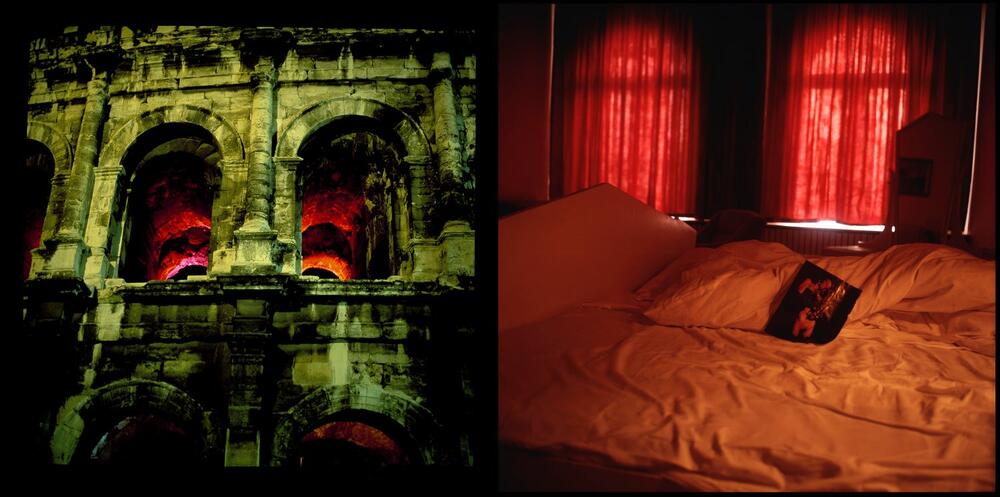
The entire production of the first stage of the proposal arose from the work done in parallel with Daido Moriyama, a photographer with whom he distanced himself, but at the same time complemented, with points of view that spoke different languages, one more oriented to the aesthetics of cinema, while the other advocated more for the symbolic and pictorial.
Among the most spectacular works on display at Centro Niemeyer is Tokyo Long Neck, a striking succession of images that present, along 17 meters of the space's Photography Room, a visual summary of the Brazilian's perception of Japan, somewhat past, but equally iconic today.
The exhibition reflects Rio Branco's habitual confidence in the mixture, in the artistic cooperation of languages and disciplines associated with the traditional techniques of painting and photography, consolidating his own expression with which he tries to find answers to his relationship with the environment.
De Tokyo Blues hacia Gritos Sordos can be seen until November 3rd at Centro Niemeyer, Avenida del Zinc, Avilés (Spain).
Related Topics
May interest you

Last Thursday, September 26, a ceremony was held at the French Embassy in Paraguay, where Ambassador Pierre-Christian Soccoja awarded art critic Adriana Almada and visual artist Félix Toranzos with the Order of Arts and Letters. Both were part of the third edition of Pinta Sud | ASU.
ADRIANA ALMADA AND FÉLIX TORANZOS: AWARDED BY THE GOVERNMENT OF FRANCE
Last Thursday, September 26, a ceremony was held at the French Embassy in Paraguay, where Ambassador Pierre-Christian Soccoja awarded art critic Adriana Almada and visual artist Félix Toranzos with the Order of Arts and Letters. Both were part of the third edition of Pinta Sud | ASU.

Last Thursday, September 26, a ceremony was held at the French Embassy in Paraguay, where Ambassador Pierre-Christian Soccoja awarded art critic Adriana Almada and visual artist Félix Toranzos with the Order of Arts and Letters. Both were part of the third edition of Pinta Sud | ASU.
ADRIANA ALMADA AND FÉLIX TORANZOS: AWARDED BY THE GOVERNMENT OF FRANCE
Last Thursday, September 26, a ceremony was held at the French Embassy in Paraguay, where Ambassador Pierre-Christian Soccoja awarded art critic Adriana Almada and visual artist Félix Toranzos with the Order of Arts and Letters. Both were part of the third edition of Pinta Sud | ASU.
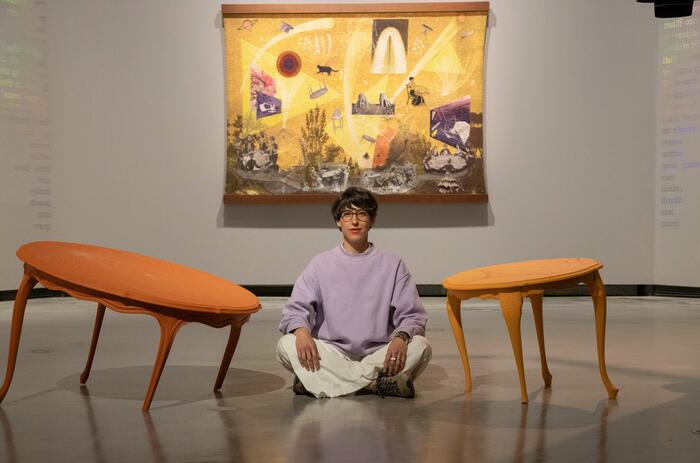
Mercedes Azpilicueta (La Plata, Argentina, 1981) lands with her dancing tables at the Centro de Creación Contemporánea de Andalucía (C3A) in an exhibition curated by Verónica Rossi and Jimena Blázquez. A visual and performance artist based in Amsterdam, her artistic practice proposes in her multi-layered works a meeting place between the past and the present through her protagonists and their expressions, some physical -but not corporeal-, such as voices; others, material, such as forms and texts; and others of a more intangible nature such as memory and remembrance.
MERCEDES AZPILICUETA AND HER “DANCING TABLES” IN C3A
Mercedes Azpilicueta (La Plata, Argentina, 1981) lands with her dancing tables at the Centro de Creación Contemporánea de Andalucía (C3A) in an exhibition curated by Verónica Rossi and Jimena Blázquez. A visual and performance artist based in Amsterdam, her artistic practice proposes in her multi-layered works a meeting place between the past and the present through her protagonists and their expressions, some physical -but not corporeal-, such as voices; others, material, such as forms and texts; and others of a more intangible nature such as memory and remembrance.
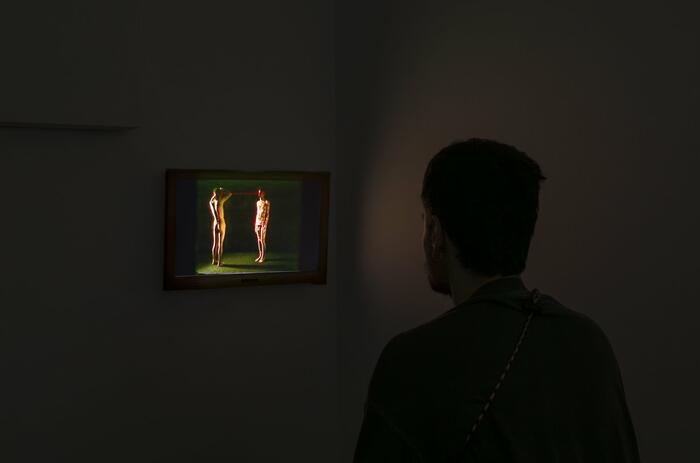
Zielinsky presents in its Barcelona space Gladiators of the future, a solo exhibition by Claudio Goulart (Brazil, 1954 - The Netherlands, 2005) that continues Fragmentos da Memória, the exhibition on Goulart held at the gallery's headquarters in São Paulo. The show addresses themes of politics, the body and time, the usual axes of the Brazilian's production, which relied on his life experience as the main source.
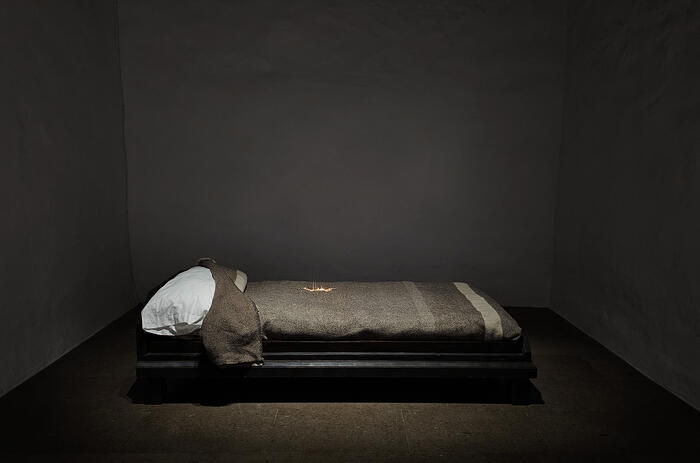
Pamen Pereira (Ferrol, Spain, 1963) unfolds her project Don't give up at Artizar gallery in Tenerife, a show made up of fourteen pieces that make up a total, but that must be seen from the prism of combination and language. However, the artist advocates for observing what is hidden behind the relationship of her works, the selection and the dialogue that the tour offers us.
PAMEN PEREIRA: SPACE, ORDER AND ELEMENTS, AT ARTIZAR
Pamen Pereira (Ferrol, Spain, 1963) unfolds her project Don't give up at Artizar gallery in Tenerife, a show made up of fourteen pieces that make up a total, but that must be seen from the prism of combination and language. However, the artist advocates for observing what is hidden behind the relationship of her works, the selection and the dialogue that the tour offers us.
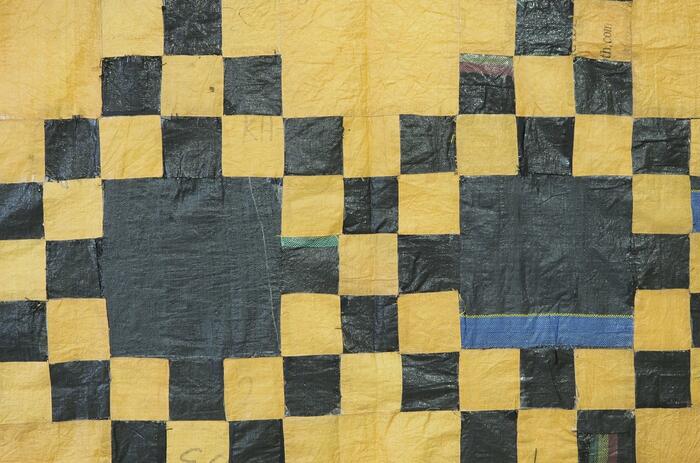
Casa de América is hosting three interconnected exhibitions in Madrid until November 30 that investigate and show the influence of the arts and the roots of pre-Columbian cultures in contemporary art and architecture.
THE PRE-COLUMBIAN ROOTS IN THE CONTEMPORARY, AT CASA DE AMERICA
Casa de América is hosting three interconnected exhibitions in Madrid until November 30 that investigate and show the influence of the arts and the roots of pre-Columbian cultures in contemporary art and architecture.
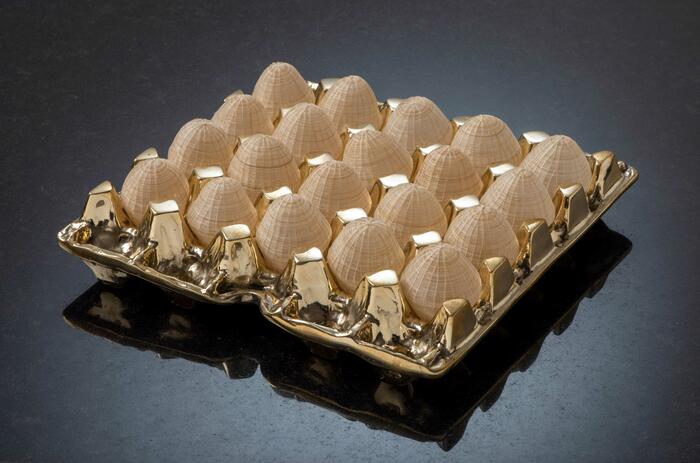
Rutas relacionales (Relational Routes) is the long-term collective with which the Lucía Mendoza gallery celebrates its tenth anniversary and with which it intends to raise awareness, through the work of about 40 artists, about several of the current thematic and philosophical axes, those that trace their need from the relationship of mankind with its environment. In these axes, we find lines of argument that deal with ecology, society and economies, passing through everything that composes them, such as political processes or the construction of identity.
"RELATIONAL ROUTES": THE LATIN AMERICAN COLLECTIVE EXHIBITION AT LUCÍA MENDOZA
Rutas relacionales (Relational Routes) is the long-term collective with which the Lucía Mendoza gallery celebrates its tenth anniversary and with which it intends to raise awareness, through the work of about 40 artists, about several of the current thematic and philosophical axes, those that trace their need from the relationship of mankind with its environment. In these axes, we find lines of argument that deal with ecology, society and economies, passing through everything that composes them, such as political processes or the construction of identity.
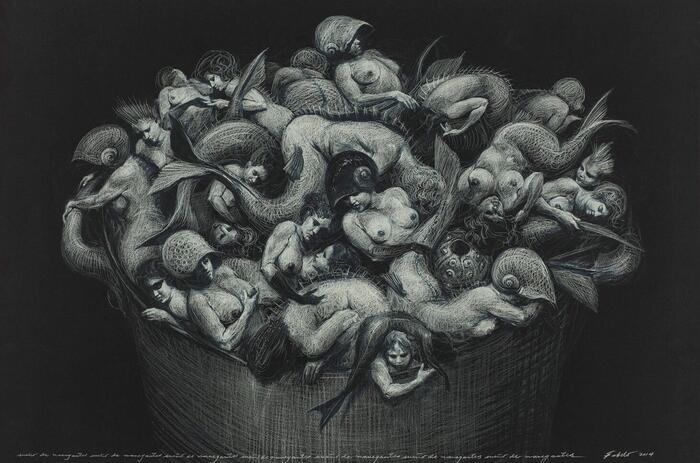
The DA2 hosts the last stage of the itinerancy of the Luciano Méndez Sánchez Contemporary Cuban Art Collection, a cycle of exhibitions that the collection started in 2019 in Spain in this institution and that reflects, through different curatorial lines, the realities and attitudes around contemporary art in Cuba.
THE LATEST TOUR AT DA2 OF THE LUCIANO MÉNDEZ SÁNCHEZ CONTEMPORARY CUBAN ART COLLECTION
The DA2 hosts the last stage of the itinerancy of the Luciano Méndez Sánchez Contemporary Cuban Art Collection, a cycle of exhibitions that the collection started in 2019 in Spain in this institution and that reflects, through different curatorial lines, the realities and attitudes around contemporary art in Cuba.
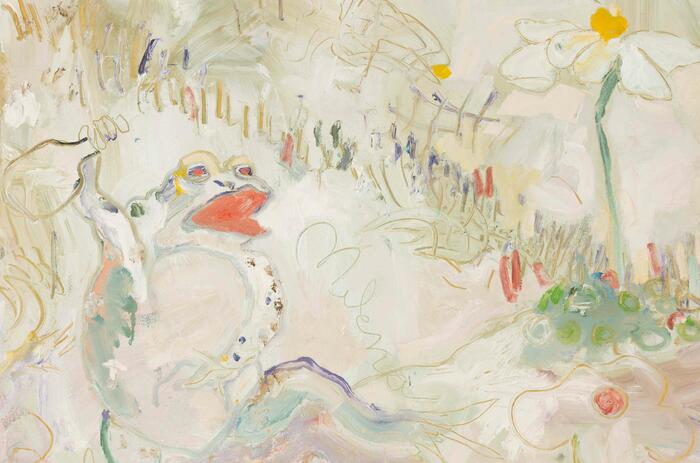
Travesía Cuatro hosts at its Madrid headquarters Surf and Turf, the fifth exhibition that the gallery dedicates to Milena Múzquiz (Tijuana, Mexico, 1972), that gathers, with about thirty works, the continuity of the production that began after the aesthetic and technical change produced by the end of Los Súper Elegantes, a musical group that he shared with the Argentine Martiniano López Crozet, and which represented a platform that brought together his purest expression through voice and body, as well as with the aesthetic possibilities of costumes and image.
THE DAILY LIFE AND POPULAR EXPRESSION OF MILENA MÚZQUIZ IN TRAVESÍA CUATRO
Travesía Cuatro hosts at its Madrid headquarters Surf and Turf, the fifth exhibition that the gallery dedicates to Milena Múzquiz (Tijuana, Mexico, 1972), that gathers, with about thirty works, the continuity of the production that began after the aesthetic and technical change produced by the end of Los Súper Elegantes, a musical group that he shared with the Argentine Martiniano López Crozet, and which represented a platform that brought together his purest expression through voice and body, as well as with the aesthetic possibilities of costumes and image.
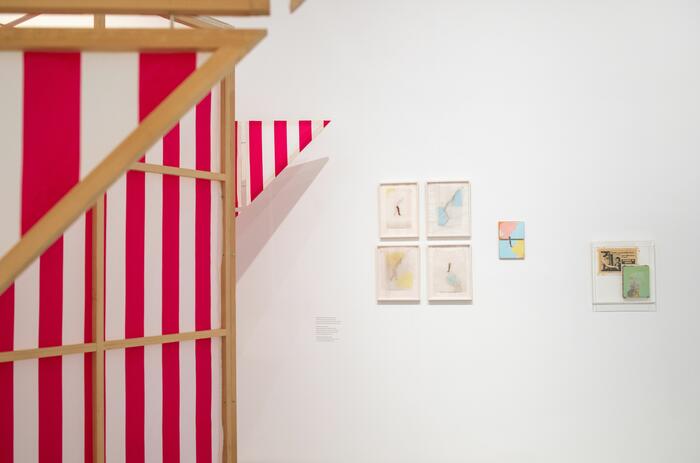
“I imagine the museum as an archipelago. It is not a continent, but an archipelago (...) The idea today is to put the world in contact with the world, to put some parts of the world in contact with other parts of the world... We must multiply the number of worlds inside museums”. Édouard Glissant (Sainte-Marie, Martinique, 1929-Paris, France, 2011) expressed his vision of museum functionality in this metaphorical way in his work Poetics of Relationship (1990).
CAN THE ARCHIPELAGO ENTER THE MUSEUM? IBEROAMERICA IN THE PROPOSAL OF THE HELGA DE ALVEAR MUSEUM
“I imagine the museum as an archipelago. It is not a continent, but an archipelago (...) The idea today is to put the world in contact with the world, to put some parts of the world in contact with other parts of the world... We must multiply the number of worlds inside museums”. Édouard Glissant (Sainte-Marie, Martinique, 1929-Paris, France, 2011) expressed his vision of museum functionality in this metaphorical way in his work Poetics of Relationship (1990).

Last Thursday, September 26, a ceremony was held at the French Embassy in Paraguay, where Ambassador Pierre-Christian Soccoja awarded art critic Adriana Almada and visual artist Félix Toranzos with the Order of Arts and Letters. Both were part of the third edition of Pinta Sud | ASU.
ADRIANA ALMADA AND FÉLIX TORANZOS: AWARDED BY THE GOVERNMENT OF FRANCE
Last Thursday, September 26, a ceremony was held at the French Embassy in Paraguay, where Ambassador Pierre-Christian Soccoja awarded art critic Adriana Almada and visual artist Félix Toranzos with the Order of Arts and Letters. Both were part of the third edition of Pinta Sud | ASU.

Mercedes Azpilicueta (La Plata, Argentina, 1981) lands with her dancing tables at the Centro de Creación Contemporánea de Andalucía (C3A) in an exhibition curated by Verónica Rossi and Jimena Blázquez. A visual and performance artist based in Amsterdam, her artistic practice proposes in her multi-layered works a meeting place between the past and the present through her protagonists and their expressions, some physical -but not corporeal-, such as voices; others, material, such as forms and texts; and others of a more intangible nature such as memory and remembrance.
MERCEDES AZPILICUETA AND HER “DANCING TABLES” IN C3A
Mercedes Azpilicueta (La Plata, Argentina, 1981) lands with her dancing tables at the Centro de Creación Contemporánea de Andalucía (C3A) in an exhibition curated by Verónica Rossi and Jimena Blázquez. A visual and performance artist based in Amsterdam, her artistic practice proposes in her multi-layered works a meeting place between the past and the present through her protagonists and their expressions, some physical -but not corporeal-, such as voices; others, material, such as forms and texts; and others of a more intangible nature such as memory and remembrance.

Zielinsky presents in its Barcelona space Gladiators of the future, a solo exhibition by Claudio Goulart (Brazil, 1954 - The Netherlands, 2005) that continues Fragmentos da Memória, the exhibition on Goulart held at the gallery's headquarters in São Paulo. The show addresses themes of politics, the body and time, the usual axes of the Brazilian's production, which relied on his life experience as the main source.

Pamen Pereira (Ferrol, Spain, 1963) unfolds her project Don't give up at Artizar gallery in Tenerife, a show made up of fourteen pieces that make up a total, but that must be seen from the prism of combination and language. However, the artist advocates for observing what is hidden behind the relationship of her works, the selection and the dialogue that the tour offers us.
PAMEN PEREIRA: SPACE, ORDER AND ELEMENTS, AT ARTIZAR
Pamen Pereira (Ferrol, Spain, 1963) unfolds her project Don't give up at Artizar gallery in Tenerife, a show made up of fourteen pieces that make up a total, but that must be seen from the prism of combination and language. However, the artist advocates for observing what is hidden behind the relationship of her works, the selection and the dialogue that the tour offers us.

Casa de América is hosting three interconnected exhibitions in Madrid until November 30 that investigate and show the influence of the arts and the roots of pre-Columbian cultures in contemporary art and architecture.
THE PRE-COLUMBIAN ROOTS IN THE CONTEMPORARY, AT CASA DE AMERICA
Casa de América is hosting three interconnected exhibitions in Madrid until November 30 that investigate and show the influence of the arts and the roots of pre-Columbian cultures in contemporary art and architecture.

Rutas relacionales (Relational Routes) is the long-term collective with which the Lucía Mendoza gallery celebrates its tenth anniversary and with which it intends to raise awareness, through the work of about 40 artists, about several of the current thematic and philosophical axes, those that trace their need from the relationship of mankind with its environment. In these axes, we find lines of argument that deal with ecology, society and economies, passing through everything that composes them, such as political processes or the construction of identity.
"RELATIONAL ROUTES": THE LATIN AMERICAN COLLECTIVE EXHIBITION AT LUCÍA MENDOZA
Rutas relacionales (Relational Routes) is the long-term collective with which the Lucía Mendoza gallery celebrates its tenth anniversary and with which it intends to raise awareness, through the work of about 40 artists, about several of the current thematic and philosophical axes, those that trace their need from the relationship of mankind with its environment. In these axes, we find lines of argument that deal with ecology, society and economies, passing through everything that composes them, such as political processes or the construction of identity.

The DA2 hosts the last stage of the itinerancy of the Luciano Méndez Sánchez Contemporary Cuban Art Collection, a cycle of exhibitions that the collection started in 2019 in Spain in this institution and that reflects, through different curatorial lines, the realities and attitudes around contemporary art in Cuba.
THE LATEST TOUR AT DA2 OF THE LUCIANO MÉNDEZ SÁNCHEZ CONTEMPORARY CUBAN ART COLLECTION
The DA2 hosts the last stage of the itinerancy of the Luciano Méndez Sánchez Contemporary Cuban Art Collection, a cycle of exhibitions that the collection started in 2019 in Spain in this institution and that reflects, through different curatorial lines, the realities and attitudes around contemporary art in Cuba.

Travesía Cuatro hosts at its Madrid headquarters Surf and Turf, the fifth exhibition that the gallery dedicates to Milena Múzquiz (Tijuana, Mexico, 1972), that gathers, with about thirty works, the continuity of the production that began after the aesthetic and technical change produced by the end of Los Súper Elegantes, a musical group that he shared with the Argentine Martiniano López Crozet, and which represented a platform that brought together his purest expression through voice and body, as well as with the aesthetic possibilities of costumes and image.
THE DAILY LIFE AND POPULAR EXPRESSION OF MILENA MÚZQUIZ IN TRAVESÍA CUATRO
Travesía Cuatro hosts at its Madrid headquarters Surf and Turf, the fifth exhibition that the gallery dedicates to Milena Múzquiz (Tijuana, Mexico, 1972), that gathers, with about thirty works, the continuity of the production that began after the aesthetic and technical change produced by the end of Los Súper Elegantes, a musical group that he shared with the Argentine Martiniano López Crozet, and which represented a platform that brought together his purest expression through voice and body, as well as with the aesthetic possibilities of costumes and image.

“I imagine the museum as an archipelago. It is not a continent, but an archipelago (...) The idea today is to put the world in contact with the world, to put some parts of the world in contact with other parts of the world... We must multiply the number of worlds inside museums”. Édouard Glissant (Sainte-Marie, Martinique, 1929-Paris, France, 2011) expressed his vision of museum functionality in this metaphorical way in his work Poetics of Relationship (1990).
CAN THE ARCHIPELAGO ENTER THE MUSEUM? IBEROAMERICA IN THE PROPOSAL OF THE HELGA DE ALVEAR MUSEUM
“I imagine the museum as an archipelago. It is not a continent, but an archipelago (...) The idea today is to put the world in contact with the world, to put some parts of the world in contact with other parts of the world... We must multiply the number of worlds inside museums”. Édouard Glissant (Sainte-Marie, Martinique, 1929-Paris, France, 2011) expressed his vision of museum functionality in this metaphorical way in his work Poetics of Relationship (1990).

Last Thursday, September 26, a ceremony was held at the French Embassy in Paraguay, where Ambassador Pierre-Christian Soccoja awarded art critic Adriana Almada and visual artist Félix Toranzos with the Order of Arts and Letters. Both were part of the third edition of Pinta Sud | ASU.
ADRIANA ALMADA AND FÉLIX TORANZOS: AWARDED BY THE GOVERNMENT OF FRANCE
Last Thursday, September 26, a ceremony was held at the French Embassy in Paraguay, where Ambassador Pierre-Christian Soccoja awarded art critic Adriana Almada and visual artist Félix Toranzos with the Order of Arts and Letters. Both were part of the third edition of Pinta Sud | ASU.

Mercedes Azpilicueta (La Plata, Argentina, 1981) lands with her dancing tables at the Centro de Creación Contemporánea de Andalucía (C3A) in an exhibition curated by Verónica Rossi and Jimena Blázquez. A visual and performance artist based in Amsterdam, her artistic practice proposes in her multi-layered works a meeting place between the past and the present through her protagonists and their expressions, some physical -but not corporeal-, such as voices; others, material, such as forms and texts; and others of a more intangible nature such as memory and remembrance.
MERCEDES AZPILICUETA AND HER “DANCING TABLES” IN C3A
Mercedes Azpilicueta (La Plata, Argentina, 1981) lands with her dancing tables at the Centro de Creación Contemporánea de Andalucía (C3A) in an exhibition curated by Verónica Rossi and Jimena Blázquez. A visual and performance artist based in Amsterdam, her artistic practice proposes in her multi-layered works a meeting place between the past and the present through her protagonists and their expressions, some physical -but not corporeal-, such as voices; others, material, such as forms and texts; and others of a more intangible nature such as memory and remembrance.

Zielinsky presents in its Barcelona space Gladiators of the future, a solo exhibition by Claudio Goulart (Brazil, 1954 - The Netherlands, 2005) that continues Fragmentos da Memória, the exhibition on Goulart held at the gallery's headquarters in São Paulo. The show addresses themes of politics, the body and time, the usual axes of the Brazilian's production, which relied on his life experience as the main source.

Pamen Pereira (Ferrol, Spain, 1963) unfolds her project Don't give up at Artizar gallery in Tenerife, a show made up of fourteen pieces that make up a total, but that must be seen from the prism of combination and language. However, the artist advocates for observing what is hidden behind the relationship of her works, the selection and the dialogue that the tour offers us.
PAMEN PEREIRA: SPACE, ORDER AND ELEMENTS, AT ARTIZAR
Pamen Pereira (Ferrol, Spain, 1963) unfolds her project Don't give up at Artizar gallery in Tenerife, a show made up of fourteen pieces that make up a total, but that must be seen from the prism of combination and language. However, the artist advocates for observing what is hidden behind the relationship of her works, the selection and the dialogue that the tour offers us.

Casa de América is hosting three interconnected exhibitions in Madrid until November 30 that investigate and show the influence of the arts and the roots of pre-Columbian cultures in contemporary art and architecture.
THE PRE-COLUMBIAN ROOTS IN THE CONTEMPORARY, AT CASA DE AMERICA
Casa de América is hosting three interconnected exhibitions in Madrid until November 30 that investigate and show the influence of the arts and the roots of pre-Columbian cultures in contemporary art and architecture.

Rutas relacionales (Relational Routes) is the long-term collective with which the Lucía Mendoza gallery celebrates its tenth anniversary and with which it intends to raise awareness, through the work of about 40 artists, about several of the current thematic and philosophical axes, those that trace their need from the relationship of mankind with its environment. In these axes, we find lines of argument that deal with ecology, society and economies, passing through everything that composes them, such as political processes or the construction of identity.
"RELATIONAL ROUTES": THE LATIN AMERICAN COLLECTIVE EXHIBITION AT LUCÍA MENDOZA
Rutas relacionales (Relational Routes) is the long-term collective with which the Lucía Mendoza gallery celebrates its tenth anniversary and with which it intends to raise awareness, through the work of about 40 artists, about several of the current thematic and philosophical axes, those that trace their need from the relationship of mankind with its environment. In these axes, we find lines of argument that deal with ecology, society and economies, passing through everything that composes them, such as political processes or the construction of identity.

The DA2 hosts the last stage of the itinerancy of the Luciano Méndez Sánchez Contemporary Cuban Art Collection, a cycle of exhibitions that the collection started in 2019 in Spain in this institution and that reflects, through different curatorial lines, the realities and attitudes around contemporary art in Cuba.
THE LATEST TOUR AT DA2 OF THE LUCIANO MÉNDEZ SÁNCHEZ CONTEMPORARY CUBAN ART COLLECTION
The DA2 hosts the last stage of the itinerancy of the Luciano Méndez Sánchez Contemporary Cuban Art Collection, a cycle of exhibitions that the collection started in 2019 in Spain in this institution and that reflects, through different curatorial lines, the realities and attitudes around contemporary art in Cuba.

Travesía Cuatro hosts at its Madrid headquarters Surf and Turf, the fifth exhibition that the gallery dedicates to Milena Múzquiz (Tijuana, Mexico, 1972), that gathers, with about thirty works, the continuity of the production that began after the aesthetic and technical change produced by the end of Los Súper Elegantes, a musical group that he shared with the Argentine Martiniano López Crozet, and which represented a platform that brought together his purest expression through voice and body, as well as with the aesthetic possibilities of costumes and image.
THE DAILY LIFE AND POPULAR EXPRESSION OF MILENA MÚZQUIZ IN TRAVESÍA CUATRO
Travesía Cuatro hosts at its Madrid headquarters Surf and Turf, the fifth exhibition that the gallery dedicates to Milena Múzquiz (Tijuana, Mexico, 1972), that gathers, with about thirty works, the continuity of the production that began after the aesthetic and technical change produced by the end of Los Súper Elegantes, a musical group that he shared with the Argentine Martiniano López Crozet, and which represented a platform that brought together his purest expression through voice and body, as well as with the aesthetic possibilities of costumes and image.

“I imagine the museum as an archipelago. It is not a continent, but an archipelago (...) The idea today is to put the world in contact with the world, to put some parts of the world in contact with other parts of the world... We must multiply the number of worlds inside museums”. Édouard Glissant (Sainte-Marie, Martinique, 1929-Paris, France, 2011) expressed his vision of museum functionality in this metaphorical way in his work Poetics of Relationship (1990).
CAN THE ARCHIPELAGO ENTER THE MUSEUM? IBEROAMERICA IN THE PROPOSAL OF THE HELGA DE ALVEAR MUSEUM
“I imagine the museum as an archipelago. It is not a continent, but an archipelago (...) The idea today is to put the world in contact with the world, to put some parts of the world in contact with other parts of the world... We must multiply the number of worlds inside museums”. Édouard Glissant (Sainte-Marie, Martinique, 1929-Paris, France, 2011) expressed his vision of museum functionality in this metaphorical way in his work Poetics of Relationship (1990).

Last Thursday, September 26, a ceremony was held at the French Embassy in Paraguay, where Ambassador Pierre-Christian Soccoja awarded art critic Adriana Almada and visual artist Félix Toranzos with the Order of Arts and Letters. Both were part of the third edition of Pinta Sud | ASU.
ADRIANA ALMADA AND FÉLIX TORANZOS: AWARDED BY THE GOVERNMENT OF FRANCE
Last Thursday, September 26, a ceremony was held at the French Embassy in Paraguay, where Ambassador Pierre-Christian Soccoja awarded art critic Adriana Almada and visual artist Félix Toranzos with the Order of Arts and Letters. Both were part of the third edition of Pinta Sud | ASU.

Mercedes Azpilicueta (La Plata, Argentina, 1981) lands with her dancing tables at the Centro de Creación Contemporánea de Andalucía (C3A) in an exhibition curated by Verónica Rossi and Jimena Blázquez. A visual and performance artist based in Amsterdam, her artistic practice proposes in her multi-layered works a meeting place between the past and the present through her protagonists and their expressions, some physical -but not corporeal-, such as voices; others, material, such as forms and texts; and others of a more intangible nature such as memory and remembrance.
MERCEDES AZPILICUETA AND HER “DANCING TABLES” IN C3A
Mercedes Azpilicueta (La Plata, Argentina, 1981) lands with her dancing tables at the Centro de Creación Contemporánea de Andalucía (C3A) in an exhibition curated by Verónica Rossi and Jimena Blázquez. A visual and performance artist based in Amsterdam, her artistic practice proposes in her multi-layered works a meeting place between the past and the present through her protagonists and their expressions, some physical -but not corporeal-, such as voices; others, material, such as forms and texts; and others of a more intangible nature such as memory and remembrance.

Zielinsky presents in its Barcelona space Gladiators of the future, a solo exhibition by Claudio Goulart (Brazil, 1954 - The Netherlands, 2005) that continues Fragmentos da Memória, the exhibition on Goulart held at the gallery's headquarters in São Paulo. The show addresses themes of politics, the body and time, the usual axes of the Brazilian's production, which relied on his life experience as the main source.

Pamen Pereira (Ferrol, Spain, 1963) unfolds her project Don't give up at Artizar gallery in Tenerife, a show made up of fourteen pieces that make up a total, but that must be seen from the prism of combination and language. However, the artist advocates for observing what is hidden behind the relationship of her works, the selection and the dialogue that the tour offers us.
PAMEN PEREIRA: SPACE, ORDER AND ELEMENTS, AT ARTIZAR
Pamen Pereira (Ferrol, Spain, 1963) unfolds her project Don't give up at Artizar gallery in Tenerife, a show made up of fourteen pieces that make up a total, but that must be seen from the prism of combination and language. However, the artist advocates for observing what is hidden behind the relationship of her works, the selection and the dialogue that the tour offers us.

Casa de América is hosting three interconnected exhibitions in Madrid until November 30 that investigate and show the influence of the arts and the roots of pre-Columbian cultures in contemporary art and architecture.
THE PRE-COLUMBIAN ROOTS IN THE CONTEMPORARY, AT CASA DE AMERICA
Casa de América is hosting three interconnected exhibitions in Madrid until November 30 that investigate and show the influence of the arts and the roots of pre-Columbian cultures in contemporary art and architecture.

Rutas relacionales (Relational Routes) is the long-term collective with which the Lucía Mendoza gallery celebrates its tenth anniversary and with which it intends to raise awareness, through the work of about 40 artists, about several of the current thematic and philosophical axes, those that trace their need from the relationship of mankind with its environment. In these axes, we find lines of argument that deal with ecology, society and economies, passing through everything that composes them, such as political processes or the construction of identity.
"RELATIONAL ROUTES": THE LATIN AMERICAN COLLECTIVE EXHIBITION AT LUCÍA MENDOZA
Rutas relacionales (Relational Routes) is the long-term collective with which the Lucía Mendoza gallery celebrates its tenth anniversary and with which it intends to raise awareness, through the work of about 40 artists, about several of the current thematic and philosophical axes, those that trace their need from the relationship of mankind with its environment. In these axes, we find lines of argument that deal with ecology, society and economies, passing through everything that composes them, such as political processes or the construction of identity.

The DA2 hosts the last stage of the itinerancy of the Luciano Méndez Sánchez Contemporary Cuban Art Collection, a cycle of exhibitions that the collection started in 2019 in Spain in this institution and that reflects, through different curatorial lines, the realities and attitudes around contemporary art in Cuba.
THE LATEST TOUR AT DA2 OF THE LUCIANO MÉNDEZ SÁNCHEZ CONTEMPORARY CUBAN ART COLLECTION
The DA2 hosts the last stage of the itinerancy of the Luciano Méndez Sánchez Contemporary Cuban Art Collection, a cycle of exhibitions that the collection started in 2019 in Spain in this institution and that reflects, through different curatorial lines, the realities and attitudes around contemporary art in Cuba.

Travesía Cuatro hosts at its Madrid headquarters Surf and Turf, the fifth exhibition that the gallery dedicates to Milena Múzquiz (Tijuana, Mexico, 1972), that gathers, with about thirty works, the continuity of the production that began after the aesthetic and technical change produced by the end of Los Súper Elegantes, a musical group that he shared with the Argentine Martiniano López Crozet, and which represented a platform that brought together his purest expression through voice and body, as well as with the aesthetic possibilities of costumes and image.
THE DAILY LIFE AND POPULAR EXPRESSION OF MILENA MÚZQUIZ IN TRAVESÍA CUATRO
Travesía Cuatro hosts at its Madrid headquarters Surf and Turf, the fifth exhibition that the gallery dedicates to Milena Múzquiz (Tijuana, Mexico, 1972), that gathers, with about thirty works, the continuity of the production that began after the aesthetic and technical change produced by the end of Los Súper Elegantes, a musical group that he shared with the Argentine Martiniano López Crozet, and which represented a platform that brought together his purest expression through voice and body, as well as with the aesthetic possibilities of costumes and image.

“I imagine the museum as an archipelago. It is not a continent, but an archipelago (...) The idea today is to put the world in contact with the world, to put some parts of the world in contact with other parts of the world... We must multiply the number of worlds inside museums”. Édouard Glissant (Sainte-Marie, Martinique, 1929-Paris, France, 2011) expressed his vision of museum functionality in this metaphorical way in his work Poetics of Relationship (1990).
CAN THE ARCHIPELAGO ENTER THE MUSEUM? IBEROAMERICA IN THE PROPOSAL OF THE HELGA DE ALVEAR MUSEUM
“I imagine the museum as an archipelago. It is not a continent, but an archipelago (...) The idea today is to put the world in contact with the world, to put some parts of the world in contact with other parts of the world... We must multiply the number of worlds inside museums”. Édouard Glissant (Sainte-Marie, Martinique, 1929-Paris, France, 2011) expressed his vision of museum functionality in this metaphorical way in his work Poetics of Relationship (1990).

Last Thursday, September 26, a ceremony was held at the French Embassy in Paraguay, where Ambassador Pierre-Christian Soccoja awarded art critic Adriana Almada and visual artist Félix Toranzos with the Order of Arts and Letters. Both were part of the third edition of Pinta Sud | ASU.
ADRIANA ALMADA AND FÉLIX TORANZOS: AWARDED BY THE GOVERNMENT OF FRANCE
Last Thursday, September 26, a ceremony was held at the French Embassy in Paraguay, where Ambassador Pierre-Christian Soccoja awarded art critic Adriana Almada and visual artist Félix Toranzos with the Order of Arts and Letters. Both were part of the third edition of Pinta Sud | ASU.

Mercedes Azpilicueta (La Plata, Argentina, 1981) lands with her dancing tables at the Centro de Creación Contemporánea de Andalucía (C3A) in an exhibition curated by Verónica Rossi and Jimena Blázquez. A visual and performance artist based in Amsterdam, her artistic practice proposes in her multi-layered works a meeting place between the past and the present through her protagonists and their expressions, some physical -but not corporeal-, such as voices; others, material, such as forms and texts; and others of a more intangible nature such as memory and remembrance.
MERCEDES AZPILICUETA AND HER “DANCING TABLES” IN C3A
Mercedes Azpilicueta (La Plata, Argentina, 1981) lands with her dancing tables at the Centro de Creación Contemporánea de Andalucía (C3A) in an exhibition curated by Verónica Rossi and Jimena Blázquez. A visual and performance artist based in Amsterdam, her artistic practice proposes in her multi-layered works a meeting place between the past and the present through her protagonists and their expressions, some physical -but not corporeal-, such as voices; others, material, such as forms and texts; and others of a more intangible nature such as memory and remembrance.

Zielinsky presents in its Barcelona space Gladiators of the future, a solo exhibition by Claudio Goulart (Brazil, 1954 - The Netherlands, 2005) that continues Fragmentos da Memória, the exhibition on Goulart held at the gallery's headquarters in São Paulo. The show addresses themes of politics, the body and time, the usual axes of the Brazilian's production, which relied on his life experience as the main source.

Pamen Pereira (Ferrol, Spain, 1963) unfolds her project Don't give up at Artizar gallery in Tenerife, a show made up of fourteen pieces that make up a total, but that must be seen from the prism of combination and language. However, the artist advocates for observing what is hidden behind the relationship of her works, the selection and the dialogue that the tour offers us.
PAMEN PEREIRA: SPACE, ORDER AND ELEMENTS, AT ARTIZAR
Pamen Pereira (Ferrol, Spain, 1963) unfolds her project Don't give up at Artizar gallery in Tenerife, a show made up of fourteen pieces that make up a total, but that must be seen from the prism of combination and language. However, the artist advocates for observing what is hidden behind the relationship of her works, the selection and the dialogue that the tour offers us.

Casa de América is hosting three interconnected exhibitions in Madrid until November 30 that investigate and show the influence of the arts and the roots of pre-Columbian cultures in contemporary art and architecture.
THE PRE-COLUMBIAN ROOTS IN THE CONTEMPORARY, AT CASA DE AMERICA
Casa de América is hosting three interconnected exhibitions in Madrid until November 30 that investigate and show the influence of the arts and the roots of pre-Columbian cultures in contemporary art and architecture.

Rutas relacionales (Relational Routes) is the long-term collective with which the Lucía Mendoza gallery celebrates its tenth anniversary and with which it intends to raise awareness, through the work of about 40 artists, about several of the current thematic and philosophical axes, those that trace their need from the relationship of mankind with its environment. In these axes, we find lines of argument that deal with ecology, society and economies, passing through everything that composes them, such as political processes or the construction of identity.
"RELATIONAL ROUTES": THE LATIN AMERICAN COLLECTIVE EXHIBITION AT LUCÍA MENDOZA
Rutas relacionales (Relational Routes) is the long-term collective with which the Lucía Mendoza gallery celebrates its tenth anniversary and with which it intends to raise awareness, through the work of about 40 artists, about several of the current thematic and philosophical axes, those that trace their need from the relationship of mankind with its environment. In these axes, we find lines of argument that deal with ecology, society and economies, passing through everything that composes them, such as political processes or the construction of identity.

The DA2 hosts the last stage of the itinerancy of the Luciano Méndez Sánchez Contemporary Cuban Art Collection, a cycle of exhibitions that the collection started in 2019 in Spain in this institution and that reflects, through different curatorial lines, the realities and attitudes around contemporary art in Cuba.
THE LATEST TOUR AT DA2 OF THE LUCIANO MÉNDEZ SÁNCHEZ CONTEMPORARY CUBAN ART COLLECTION
The DA2 hosts the last stage of the itinerancy of the Luciano Méndez Sánchez Contemporary Cuban Art Collection, a cycle of exhibitions that the collection started in 2019 in Spain in this institution and that reflects, through different curatorial lines, the realities and attitudes around contemporary art in Cuba.

Travesía Cuatro hosts at its Madrid headquarters Surf and Turf, the fifth exhibition that the gallery dedicates to Milena Múzquiz (Tijuana, Mexico, 1972), that gathers, with about thirty works, the continuity of the production that began after the aesthetic and technical change produced by the end of Los Súper Elegantes, a musical group that he shared with the Argentine Martiniano López Crozet, and which represented a platform that brought together his purest expression through voice and body, as well as with the aesthetic possibilities of costumes and image.
THE DAILY LIFE AND POPULAR EXPRESSION OF MILENA MÚZQUIZ IN TRAVESÍA CUATRO
Travesía Cuatro hosts at its Madrid headquarters Surf and Turf, the fifth exhibition that the gallery dedicates to Milena Múzquiz (Tijuana, Mexico, 1972), that gathers, with about thirty works, the continuity of the production that began after the aesthetic and technical change produced by the end of Los Súper Elegantes, a musical group that he shared with the Argentine Martiniano López Crozet, and which represented a platform that brought together his purest expression through voice and body, as well as with the aesthetic possibilities of costumes and image.

“I imagine the museum as an archipelago. It is not a continent, but an archipelago (...) The idea today is to put the world in contact with the world, to put some parts of the world in contact with other parts of the world... We must multiply the number of worlds inside museums”. Édouard Glissant (Sainte-Marie, Martinique, 1929-Paris, France, 2011) expressed his vision of museum functionality in this metaphorical way in his work Poetics of Relationship (1990).
CAN THE ARCHIPELAGO ENTER THE MUSEUM? IBEROAMERICA IN THE PROPOSAL OF THE HELGA DE ALVEAR MUSEUM
“I imagine the museum as an archipelago. It is not a continent, but an archipelago (...) The idea today is to put the world in contact with the world, to put some parts of the world in contact with other parts of the world... We must multiply the number of worlds inside museums”. Édouard Glissant (Sainte-Marie, Martinique, 1929-Paris, France, 2011) expressed his vision of museum functionality in this metaphorical way in his work Poetics of Relationship (1990).




